Experience Tumblr like never before
Spiral Galaxy - Blog Posts
Our Galaxy is Caught Up in a Giant Cosmic Cobweb! 🕸️

If we could zoom waaaay out, we would see that galaxies and galaxy clusters make up large, fuzzy threads, like the strands of a giant cobweb. But we'll work our way out to that. First let's start at home and look at our planet's different cosmic communities.
Our home star system
Earth is one of eight planets — Mercury, Venus, Earth, Mars, Jupiter, Saturn, Uranus, and Neptune — that orbit the Sun. But our solar system is more than just planets; it also has a lot of smaller objects.
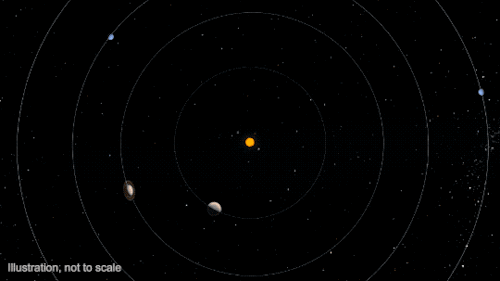
An asteroid belt circles the Sun between Mars and Jupiter. Beyond Neptune is a doughnut-shaped region of icy objects called the Kuiper Belt. This is where dwarf planets like Pluto and Makemake are found and is likely the source of short-period comets (like Haley’s comet), which orbit the Sun in less than 200 years.
Scientists think that even farther out lies the Oort Cloud, also a likely source of comets. This most distant region of our solar system is a giant spherical shell storing additional icy space debris the size of mountains, or larger! The outer edge of the Oort Cloud extends to about 1.5 light-years from the Sun — that’s the distance light travels in a year and a half (over 9 trillion miles).

Sometimes asteroids or comets get ejected from these regions and end up sharing an orbit with planets like Jupiter or even crossing Earth’s orbit. There are even interstellar objects that have entered the inner solar system from even farther than the Oort Cloud, perhaps coming all the way from another star!
Our home galaxy
Let's zoom out to look at the whole Milky Way galaxy, which contains more than 100 billion stars. Many are found in the galaxy’s disk — the pancake-shaped part of a spiral galaxy where the spiral arms lie. The brightest and most massive stars are found in the spiral arms, close to their birth places. Dimmer, less massive stars can be found sprinkled throughout the disk. Also found throughout the spiral arms are dense clouds of gas and dust called nebulae. The Sun lies in a small spiral arm called the Orion Spur.

The Milky Way’s disk is embedded in a spherical “halo” about 120,000 light-years across. The halo is dotted with globular clusters of old stars and filled with dark matter. Dark matter doesn’t emit enough light for us to directly detect it, but we know it’s there because without its mass our galaxy doesn’t have enough gravity to hold together!
Our galaxy also has several orbiting companion galaxies ranging from about 25,000 to 1.4 million light-years away. The best known of these are the Large and Small Magellanic Clouds, which are visible to the unaided eye from Earth’s Southern Hemisphere.
Our galactic neighborhood

The Milky Way and Andromeda, our nearest neighboring spiral galaxy, are just two members of a small group of galaxies called the Local Group. They and the other members of the group, 50 to 80 smaller galaxies, spread across about 10 million light-years.
The Local Group lies at the outskirts of an even larger structure. It is just one of at least 100 groups and clusters of galaxies that make up the Virgo Supercluster. This cluster of clusters spans about 110 million light-years!

Galaxies aren’t the only thing found in a galaxy cluster, though. We also find hot gas, as shown above in the bright X-ray light (in pink) that surrounds the galaxies (in optical light) of cluster Abell 1413, which is a picturesque member of a different supercluster. Plus, there is dark matter throughout the cluster that is only detectable through its gravitational interactions with other objects.
The Cosmic Web
The Virgo Supercluster is just one of many, many other groups of galaxies. But the universe’s structure is more than just galaxies, clusters, and the stuff contained within them.

For more than two decades, astronomers have been mapping out the locations of galaxies, revealing a filamentary, web-like structure. This large-scale backbone of the cosmos consists of dark matter laced with gas. Galaxies and clusters form along this structure, and there are large voids in between.
The scientific visualizations of this “cosmic web” look a little like a spider web, but that would be one colossal spider! <shudder>

And there you have the different communities that define Earth’s place in the universe. Our tiny planet is a small speck on a crumb of that giant cosmic web!
Want to learn even more about the structures in the universe? Check out our Cosmic Distance Scale!
Make sure to follow us on Tumblr for your regular dose of space.

Spotted: signs of a planet about 28 million light-years away 🔎 🪐
For the first time, astronomers may have detected an exoplanet candidate outside of the Milky Way galaxy. Exoplanets are defined as planets outside of our Solar System. All other known exoplanets and exoplanet candidates have been found in the Milky Way, almost all of them less than about 3,000 light-years from Earth.
This new result is based on transits, events in which the passage of a planet in front of a star blocks some of the star's light and produces a characteristic dip. Researchers used our Chandra X-ray Observatory to search for dips in the brightness of X-rays received from X-ray bright binaries in the spiral galaxy Messier 51, also called the Whirlpool Galaxy (pictured here). These luminous systems typically contain a neutron star or black hole pulling in gas from a closely orbiting companion star. They estimate the exoplanet candidate would be roughly the size of Saturn, and orbit the neutron star or black hole at about twice the distance of Saturn from the Sun.
This composite image of the Whirlpool Galaxy was made with X-ray data from Chandra and optical light from our Hubble Space Telescope.
Credit: X-ray: NASA/CXC/SAO/R. DiStefano, et al.; Optical: NASA/ESA/STScI/Grendler
Make sure to follow us on Tumblr for your regular dose of space!
Galaxies: Cities of Stars
Galaxies are like cities made of oodles of stars, gas, and dust bound together by gravity. These beautiful cosmic structures come in many shapes and sizes. Though there are a slew of galaxies in the universe, there are only a few we can see with the unaided eye or backyard telescope.
How many types are out there, how’d so many of them wind up with weird names, and how many stars live inside them? Hold tight while we explore these cosmic metropolises.

Galaxies come in lots of different shapes, sizes, and colors. But astronomers have noticed that there are mainly three types: spiral, elliptical, and irregular.
Spiral galaxies, like our very own Milky Way, look similar to pinwheels! These galaxies tend to have a bulging center heavily populated by stars, with elongated, sparser arms of dust and stars that wrap around it. Usually, there’s a huge black hole hiding at the center, like the Milky Way’s Sagittarius A* (pronounced A-star). Our galactic neighbor, Andromeda (also known as Messier 31 or M31), is also a spiral galaxy!

Elliptical galaxies tend to be smooth spheres of gas, dust, and stars. Like spiral galaxies, their centers are typically bulges surrounded by a halo of stars (but minus the epic spiral arms). The stars in these galaxies tend to be spread out neatly throughout the galaxies and are some of the oldest stars in the universe! Messier 87 (M87) is one example of an elliptical galaxy. The supermassive black hole at its center was recently imaged by the Event Horizon Telescope.

Irregular galaxies are, well … a bit strange. They have one-of-a-kind shapes, and many just look like messy blobs. Astronomers think that irregular galaxies' uniqueness is a result of interactions with other galaxies, like collisions! Galaxies are so big, with so much distance between their stars, that even when they collide, their stars usually do not. Galaxy collisions have been important to the formation of our Milky Way and others. When two galaxies collide, clouds of gas, dust, and stars are violently thrown around, forming an entirely new, larger one! This could be the cause of some irregular galaxies seen today.

Now that we know the different types of galaxies, what about how many stars they contain? Galaxies can come in lots of different sizes, even among each type. Dwarf galaxies, the smallest version of spiral, elliptical, and irregular galaxies, are usually made up of 1,000 to billions of stars. Compared to our Milky Way’s 200 to 400 billion stars, the dwarf galaxy known as the Small Magellanic Cloud is tiny, with just a few hundred million stars! IC 1101, on the other hand, is one of the largest elliptical galaxies found so far, containing almost 100 trillion stars.

Ever wondered how galaxies get their names? Astronomers have a number of ways to name galaxies, like the constellations we see them in or what we think they resemble. Some even have multiple names!
A more formal way astronomers name galaxies is with two-part designations based on astronomical catalogs, published collections of astronomical objects observed by specific astronomers, observatories, or spacecraft. These give us cryptic names like M51 or Swift J0241.3-0816. Catalog names usually have two parts:
A letter, word, or short acronym that identifies a specific astronomical catalog.
A sequence of numbers and/or letters that uniquely identify the galaxy within that catalog.
For M51, the “M” comes from the Messier catalog, which Charles Messier started compiling in 1771, and the "51" is because it’s the 51st entry in that catalog. Swift J0241.3-0816 is a galaxy observed by the Swift satellite, and the numbers refer to its location in the sky, similar to latitude and longitude on Earth.

There’s your quick intro to galaxies, but there’s much more to learn about them. Keep up with NASA Universe on Facebook and Twitter where we post regularly about galaxies.
Make sure to follow us on Tumblr for your regular dose of space: http://nasa.tumblr.com.

If we could squeeze a galaxy, it would be this fluffy-looking one.
Spiral galaxies like this, located 60 million light-years away, have supermassive black holes at their bright centers. Astronomers are trying to understand this cozy relationship.
Make sure to follow us on Tumblr for your regular dose of space: http://nasa.tumblr.com.
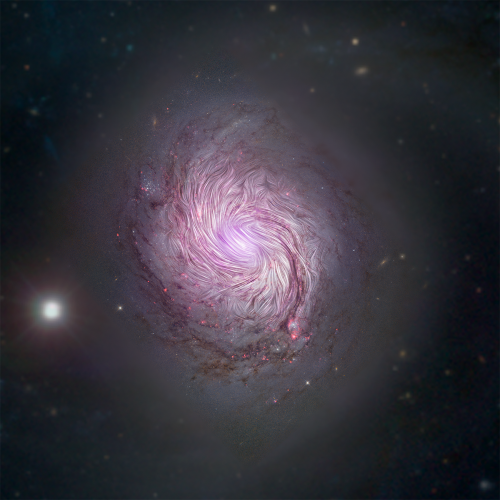
Completely invisible, yet unbelievably influential. 💫
According to new research from our Stratospheric Observatory for Infrared Astronomy (SOFIA), spiral galaxies like the Milky Way are shaped by magnetic fields. These magnetic fields are invisible to the human eye.
However, by combining imagery from our Hubble Space Telescope, the Nuclear Spectroscopic Array and the Sloan Digital Sky Survey, the magnetic fields become apparent. In this image, scientists measured the magnetic fields along the spiral arms of the galaxy called NGC 1068. The fields are shown as streamlines that closely follow the circling arms.
Image Credit: NASA/SOFIA; NASA/JPL-Caltech/Roma Tre Univ.
Make sure to follow us on Tumblr for your regular dose of space: http://nasa.tumblr.com.
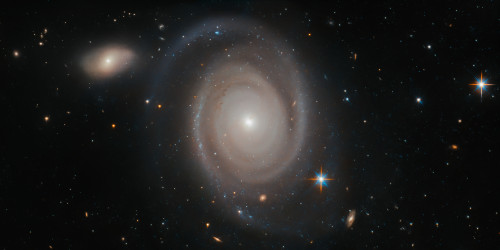
Not all galaxies are lonely. Some have galaxy squads.
NGC 1706, captured in this image by our Hubble Space Telescope, belongs to something known as a galaxy group, which is just as the name suggests — a group of up to 50 galaxies which are gravitationally bound and relatively close to each other.
Our home galaxy, the Milky Way, has its own squad — known as the Local Group, which also contains the Andromeda galaxy, the Large and Small Magellanic clouds and the Triangulum galaxy.
Make sure to follow us on Tumblr for your regular dose of space: http://nasa.tumblr.com.
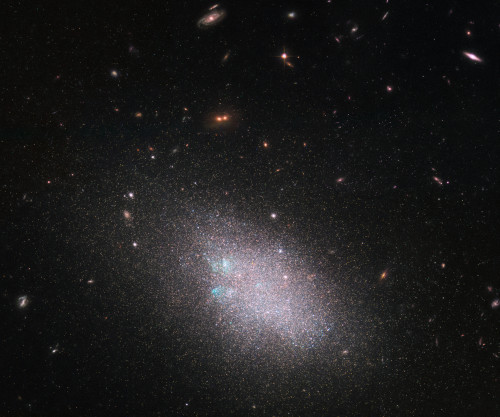
Look! A cosmic block party 🥳 In this Hubble image, you’ll find 50 spiral and dwarf galaxies hanging out in our cosmic neighborhood. The main focal point of stars is actually a dwarf galaxy. Dwarf galaxies often show a hazy structure, an ill-defined shape and an appearance somewhat akin to a swarm or cloud of stars — and UGC 685 is no exception to this. These data were gathered under Hubble’s Legacy ExtraGalactic UV Survey (LEGUS) program, the sharpest and most comprehensive ultraviolet survey of star-forming galaxies in the nearby universe. Image Credit: ESA/Hubble & NASA; the LEGUS team, B. Tully, D. Calzetti
Make sure to follow us on Tumblr for your regular dose of space: http://nasa.tumblr.com

Say hello to spiral galaxy NGC 1097 👋
About 45 million light-years away, in another corner of the cosmos, lies spiral galaxy NGC 1097. Though this Hubble Space Telescope image zooms in toward the core, the galaxy’s vast spiral arms span over 100,000 light-years as they silently sweep through space. At the heart of this galaxy lurks a black hole that is about 100 million times as massive as the Sun.
The supermassive black hole is voraciously eating up surrounding matter, which forms a doughnut-shaped ring around it. Matter that's pulled into the black hole releases powerful radiation, making the star-filled center of the galaxy even brighter. Hubble’s observations have led to the discovery that while the material that is drawn toward NGC 1097’s black hole may be doomed to die, new stars are bursting into life in the ring around it.
This sparkling spiral galaxy is especially interesting to both professional scientists and amateur astronomers. It is a popular target for supernova hunters ever since the galaxy experienced three supernovas in relatively rapid succession — just over a decade, between 1992 and 2003. Scientists are intrigued by the galaxy’s satellites — smaller “dwarf” galaxies that orbit NGC 1097 like moons. Studying this set of galaxies could reveal new information about how galaxies interact with each other and co-evolve.
Make sure to follow us on Tumblr for your regular dose of space: http://nasa.tumblr.com.
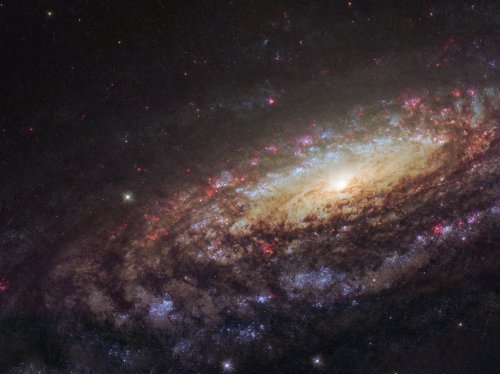
Say hello to spiral galaxy NGC 7331👋
Happy National Twin Day!
The majestic spiral galaxy NGC 7331 is almost like a long lost twin to our very own Milky Way. In this close-up, the galaxy’s magnificent spiral arms feature dark, obscuring dust lanes, bright bluish clusters of massive young stars and the telltale reddish glow of active star-forming regions. The yellowish central region harbors populations of older, cooler stars. Like in the Milky Way, a supermassive black hole lies at the galaxy’s core.
Our Hubble Space Telescope took this image while observing a supernova explosion — the fiery death of a massive star — within NGC 7331. Astronomers noted that the supernova, called SN 2014C, experienced a dramatic, hasty transformation that involved a significant upsurge in hydrogen content. This observation provided a rare chance to gain insight into the final stages of massive stars.
NGC 7331 was discovered in 1784 by famed astronomer William Herschel, who discovered the planet Uranus. It was originally classified as a nebula, which is an interstellar cloud of gas and dust, because no one knew that other galaxies existed until the 20th century. It turns out that NGC 7331 and the Milky Way are among billions and billions of galaxies in the universe!
Make sure to follow us on Tumblr for your regular dose of space: http://nasa.tumblr.com.
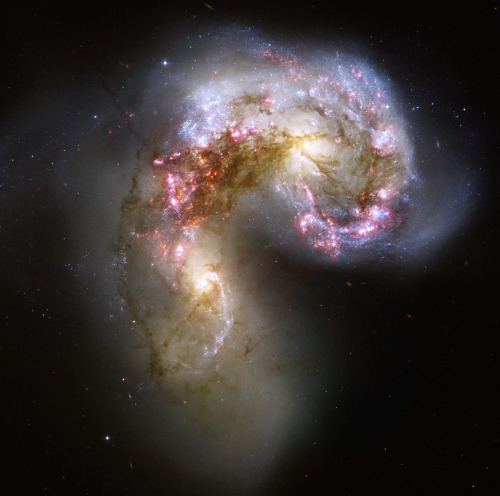
Say hello to the Antennae galaxies 👋
Two galaxies are locked in a deadly embrace in this Hubble Space Telescope image. Once normal, sedate spiral galaxies like the Milky Way, this galactic pair has spent the past few hundred million years sparring. The clash is so violent that stars have been ripped from their host galaxies to form a streaming arc between the two.
The far-flung stars and streamers of gas stretch out into space, creating long tidal tails reminiscent of antennae (not visible in this close-up Hubble view). Clouds of gas blossom out in bright pink and red, surrounding the bright flashes of blue star-forming regions — some of which are partially obscured by dark patches of dust.
Hubble’s observations have uncovered over 1,000 bright, young star clusters bursting to life as a result of the head-on wreck. The sweeping spiral-like patterns, traced by bright blue star clusters, shows the result of a firestorm of star-birth activity, which was triggered by the collision. The rate of star formation is so high that the Antennae galaxies are said to be in a state of starburst, a period in which all of the gas within the galaxies is being used to form stars. This cannot last forever, and neither can the separate galaxies; eventually the nuclei will coalesce and the galaxies will begin their retirement together as one large elliptical galaxy.
Make sure to follow us on Tumblr for your regular dose of space: http://nasa.tumblr.com.

The Needle Galaxy, NGC 4565 // Michael Cole
